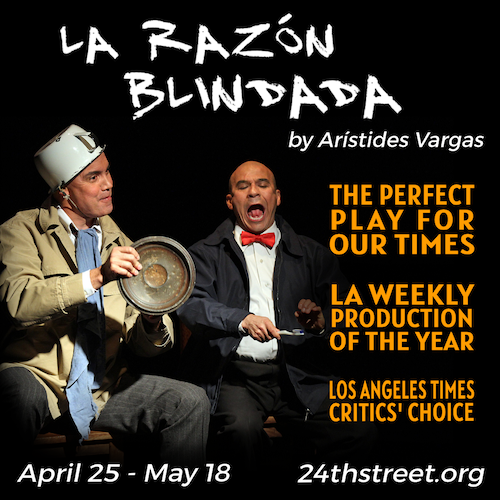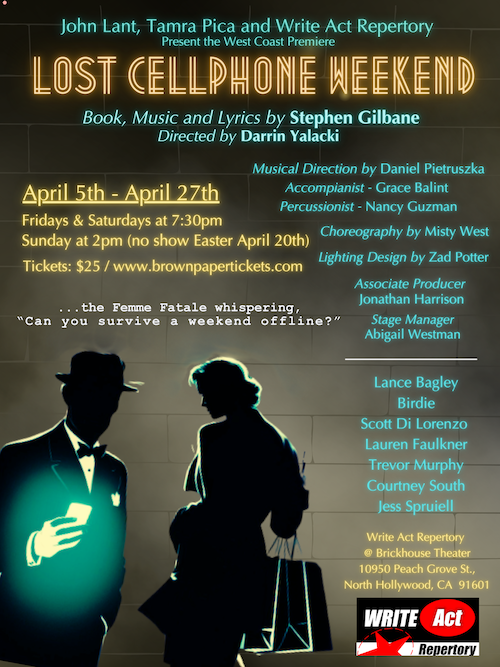
Kelly Jenrette, Tony Pasqualini and Erica Tazel
Reviewed by Deborah Klugman
Collaborative Artists Bloc & Support Black Theatre at the Matrix Theatre
Through December 10
Playwright Nikkole Salter’s Lines in the Dust was first produced in 2014. Commissioned by Luna Stage, a New Jersey theater company, the play’s premiere marked the 60-year anniversary of Brown v. Board of Education, the unanimous 1954 Supreme Court ruling that struck down the bogus legal notion of “separate but equal.” For years, that (“separate but equal’) reasoning had served as a corrupt rationale for grossly unequal schools and the attendant denial of opportunity and full citizenship to people-of-color. The defiant response among racists was perhaps best encapsulated by Alabama’s Governor George Wallace, “I draw the line in the dust… and I say segregation now, segregation tomorrow, segregation forever.”
Salter’s play takes place in 2009 and 2010 in Milburn, New Jersey, a suburban township not all that far, geographically, from urban Newark, but eons distant in terms of quality of life, including the caliber of its schools.
Two African-American women, Beverly (Kelly Jenrette), a school administrator, and Denitra (Erica Tazel), who hints that she’s a lawyer, meet at an open house, where they bond in response to the coded racist remarks of the White real estate agent showing the property. They meet again in Beverly’s office where, as interim principal at Milburn High, she is coping with the ramifications of a school shooting that has left one of the students dead. The victim had been from Newark, and the incident has spurred calls to search out any students illegally enrolled at Milburn (by citing a false address) and expel them. When Denitra unexpectedly shows up, Beverly is in the middle of an interview with a former police officer turned private investigator, Mike DiMaggio (Tony Pasqualini), who’s been retained to uncover the identities of these illegally-enrolled students, and who is angling to turn this task into a permanent position with the District.
Meanwhile, although Denitra claims she has come to the school to resolve a paperwork problem related to her daughter’s enrollment, the truth soon emerges: the “paperwork” problem boils down to the fact that she and her child live outside the district and are among those targeted by Mike.
This puts Beverly, herself formerly an underprivileged child who’d been lucky enough to land the educational opportunity she deserved, in a bind. On the one hand, her job compels her to expel Denitra’s daughter, but, if she does, she’d be denying a hardworking gifted child the same chance a benevolent fate had once bestowed on her.
Lines in the Dust is very much an expository play, its conflict turning on the impassioned desperation of a parent prepared to do most anything to secure for her daughter the future that she herself was once denied. The characters, drafted with broad strokes, articulate multiple perspectives around the issue of equality in education, including racial injustice, how much respect one should show for iffy legal statutes, and what in reality is the most equitable and financially viable way to ensure the best education for all children, regardless of where they live or their parents’ income. The play also presents, in the character of Mike, the persistent racism on the part of some Whites, who pretend to embrace tolerance while cloaking their bigotry behind a disingenuous respect for “the law.”
But unlike Dominique Morisseau’s Pipeline which, differences in plot notwithstanding, builds around the fervent desire of a Black mother to have her son attend a magnet school, Lines in the Dust (which at an hour and 50 minutes with no intermission runs way too long) hasn’t much nuance. There’s no psychological layering, no clear picture of the other people or particulars in these women’s lives. Denitra’s daughter Noelle may be the precious treasure her mother is fighting for, but she never emerges in the dialogue as more than a point of reference for the conflict at hand.
So it’s left to the actors to fill in the gaps. Under Desean K. Terry’s direction, they manage some of that in the play’s second half, as the pressure on Jenrette’s Beverly builds and Tazel, as Denitra, lays out all the anger, disappointment and sorrow of a woman whose most precious dream is perhaps about to be dashed. What comes prior, however, are able performances that serve the plot but never ignite. Well-cast as an aging blowhard, Pasqualini keeps it generic instead of building a quirky individualized persona from within.
Sean Cawelti’s projection design expands on scenic designer Mark Mendelson’s dual interiors to relay the ambience of a seemingly placid suburban community with disruption percolating from within.
Collaborative Artists Bloc, Matrix Theatre, 7657 Melrose Ave., Hollywood. Thurs. & Sat., 8 pm, Fri., 8:30 pm, Sat.-Sun., 2 pm, Sun., 7:30 pm; thru Dec. 10. Running time: One hour and 50 minutes with no intermission. https://LinesintheDust.eventbrite.com














